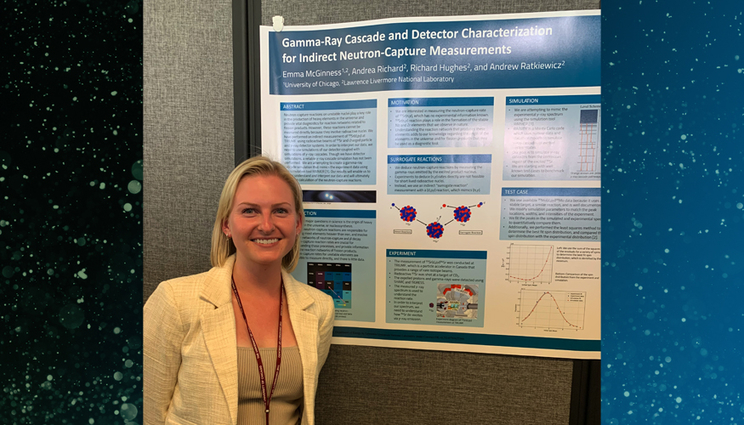Summer student work helps calculate neutron-capture reactions
Neutron-capture reactions on unstable nuclei play a key role in the production of heavy elements in the universe and provide vital diagnostics for reaction networks related to stockpile stewardship. However, these reactions cannot be measured directly because they involve radioactive nuclei. Lawrence Livermore researchers have performed indirect measurements to constrain the neutron-capture production rate of strontium-94 at the TRIUMF radioactive beam facility in Canada. In order to interpret the data, researchers need to use simulations of the detector system coupled with simulations of gamma-ray cascades of strontium-94.
During the summer, Defense Science and Technology Internship (DSTI) student Emma McGinness, under the mentorship of Andrea Richard and Richard Hughes (both NACS), created a gamma-ray cascade simulation for strontium-94 that mimics the experimental data using the simulation tool RAINIER. Her results enable better understanding and interpretation of experimental data and will ultimately aid in the calculation of the neutron-capture reactions important for nuclear astrophysics and stockpile stewardship. The tools developed from her work will also be used for the planning of future radioactive beam experiments.
Emma received a DSTI poster session award for her poster describing this work, titled “Gamma-Ray Cascade and Detector Characterization for Indirect Neutron-Capture Measurements.”
Tags
Nuclear, Chem, and Isotopic S&TNuclear and Chemical Sciences
Academic Engagement
Students
Physical and Life Sciences
Featured Articles








